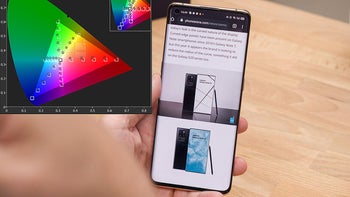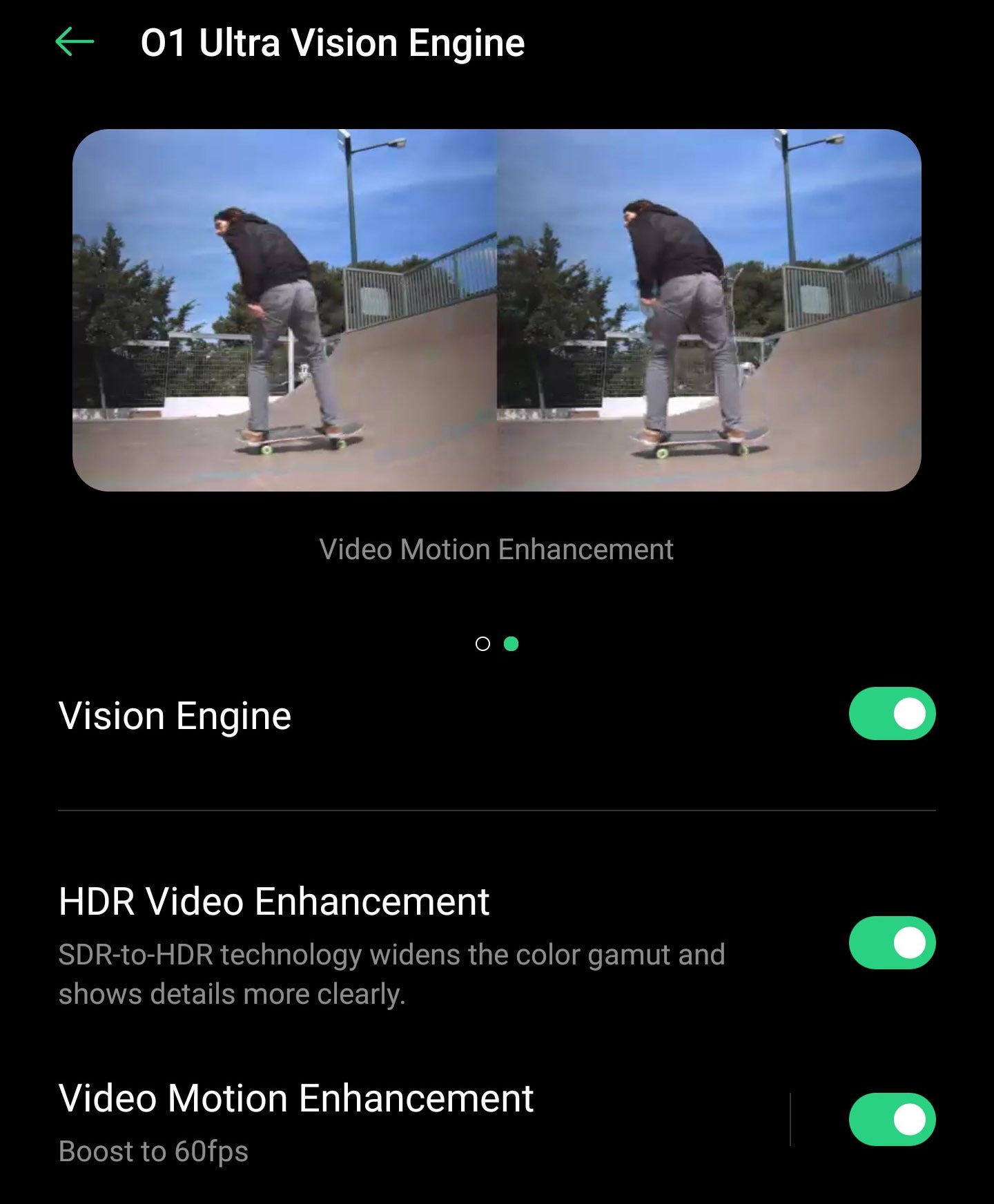The OnePlus 8 Pro 5G earns a best display award, and we have the tests to demo why
We may earn a commission if you make a purchase from the links on this page.

UPDATE: OnePlus has now officially announced its new flagships. Read our OnePlus 8 and 8 Pro news story for all the details!You can also check out our in-depth article about the OnePlus 8 display for more info on its advanced features.
Just like with the OnePlus 7 Pro, the picture-perfect folks from DisplayMate are at it again, awarding their "Highest A+ Display Rating" to a phone that hasn't been announced yet.
Call it a clever marketing trick or what you will, but it's not propaganda if it's true. After all, the OnePlus 8 series displays have been teased to be top-notch since January anyway, and by the OnePlus CEO Pete Lau at that.
We already teased what Pete Lau might have meant by juxtaposing the 6.78" 1440p adaptive 120Hz display of the Oppo Find X2 Pro that is essentially going to also land in the OnePlus 8 Pro, against the Galaxy S20 Ultra when it comes to features, and it came out on top.
Moreover, this refresh rate changes automatically depending on what you have running to save on battery (again, unlike the S20 Ultra), and here are Oppo's answers on our questions how does it all work exactly:
PhoneArena: What is the power draw difference between the Auto Select screen refresh rate setting, and 120Hz only?
Answer: Generally, 120Hz consumes more power than Auto Select mode. To help you better understand the 120Hz’s effect on battery life of Find X2 Pro, we specially asked OPPO to provide the battery test data under the mode of using QHD+ and 120Hz refresh rate simultaneously, and the mode of using QHD+ and Auto Select mode refresh rate at the same time. Comparing the data listed below, under the same status, the battery life under the Auto Select mode lasts about 1 hour longer compared to that when the refresh rate of 120Hz is continuously maintained. (Please note that the data listed below are all based on laboratory tests.)
Battery test data under different modes:
1) 120Hz, QHD+ and 135nit brightness:
Wi-Fi: about 7.9 hours; Only 4G network: about 7.4 hours
Smart 5G network: about 7.3 hours
Continuously maintaining the 5G network status: about 6 hours
2) Auto Select mode, QHD+ and 135nit brightness:
Wi-Fi: 9.1 hours; 4G network only: about 8.6hours;
Smart 5G network: about 8.5 hours;
Continuously maintaining the 5G network status: about 6.9 hours
PhoneArena: Which apps get what Hz in Auto Select - is it 120Hz in Chrome, but 60Hz in, say, video playback? What about the interface?
Answer: It’s up to the app that you are using. For example, social media apps, browsers, system interface and other local apps like photo/video album support 120Hz, whereas most of the video and gaming apps support 60Hz. For the video playback, the refresh rate will depend on the video frame rate to be either 60Hz or 120Hz.
PhoneArena: Are there content categories other than video that you plan to upscale to higher frame rates with the Ultra Vision engine?
Answer: Currently, the O1 Ultra Vision engine is focused on video upscaling and HDR enhancement, and so does not support other content categories.
Answer: Generally, 120Hz consumes more power than Auto Select mode. To help you better understand the 120Hz’s effect on battery life of Find X2 Pro, we specially asked OPPO to provide the battery test data under the mode of using QHD+ and 120Hz refresh rate simultaneously, and the mode of using QHD+ and Auto Select mode refresh rate at the same time. Comparing the data listed below, under the same status, the battery life under the Auto Select mode lasts about 1 hour longer compared to that when the refresh rate of 120Hz is continuously maintained. (Please note that the data listed below are all based on laboratory tests.)
Battery test data under different modes:
1) 120Hz, QHD+ and 135nit brightness:
Smart 5G network: about 7.3 hours
Continuously maintaining the 5G network status: about 6 hours
2) Auto Select mode, QHD+ and 135nit brightness:
Wi-Fi: 9.1 hours; 4G network only: about 8.6hours;
Smart 5G network: about 8.5 hours;
Continuously maintaining the 5G network status: about 6.9 hours
PhoneArena: Which apps get what Hz in Auto Select - is it 120Hz in Chrome, but 60Hz in, say, video playback? What about the interface?
Answer: It’s up to the app that you are using. For example, social media apps, browsers, system interface and other local apps like photo/video album support 120Hz, whereas most of the video and gaming apps support 60Hz. For the video playback, the refresh rate will depend on the video frame rate to be either 60Hz or 120Hz.
PhoneArena: Are there content categories other than video that you plan to upscale to higher frame rates with the Ultra Vision engine?
Answer: Currently, the O1 Ultra Vision engine is focused on video upscaling and HDR enhancement, and so does not support other content categories.
As you can see, using the adaptive display mode saves on power draw, and our own battery benchmarks returned 9 hours and 31 minutes at 120Hz, against 10 hours and 40 minutes in the default Auto Refresh rate mode.
Not only that, but the display is able to do what MEMC TVs do, automatically increasing frames in video to up the rate, and take better advantage of the high refresh rate even with content that is usually shot with 24fps or 30fps. Heck, the feature is even demonstrated with a skateboarder in the Oppo Find X2 Pro settings, just what the OnePlus CEO used to tease the feature back in January.
If you’ve seen high-quality TVs, you’re no stranger to MEMC. We’ve created a custom MEMC chip that can push ordinary 30fps video up to 120, so any video gets the full advantage of our 120Hz Fluid Display. pic.twitter.com/YPD3fw5uOn
— Pete Lau (@PeteLau) January 16, 2020

It's no accident that the OnePlus 8 Pro display is rumored to have the same features as the X2 Pro panel
OnePlus 8 Pro 'Best Display' color quality
There's no doubt that, judging from the excellent full-featured panel of the Oppo Find X2 Pro, its next owner in the company holding family - the OnePlus 8 Pro - will inherit one of the best mobile displays out there when it comes to features. What about brightness and picture quality, though?
In order to reach industry-leading color accuracy standards, we have added an additional automatic color calibration machine to the production line. By adding an extra 30 seconds to the production time, each display panel is automatically calibrated for color accuracy before it’s released.
Is it that good? Well, judge for yourself, as we now have the numbers on measuring the screens brightness, white balance, or gamma. Just click on the color chart distribution, we dare you.
As you can see, the future OnePlus 8 Pro display covers the standard gamut better than the one of the Galaxy S20 Ultra chart, especially the all-important greens, despite being produced by the same manufacturer, and it is also brighter. Thus, DisplayMate's tweet for "color accuracy that is visually indistinguishable from perfect" are empirically proven by our own measurements.
All those features and the extra calibration efforts make it one expensive panel to source and develop, though, and when you add the other expected 8 and 8 Pro virtues, the upcoming OnePlus 8 series may end up being the most expensive in the company's history.

























Things that are NOT allowed: